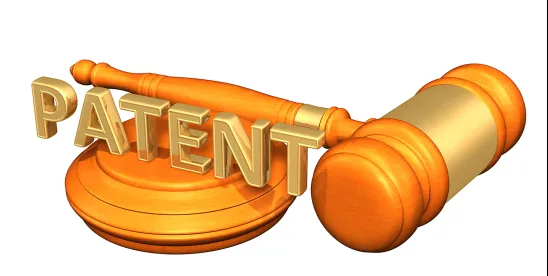The Federal Circuit’s recent decision in PowerBlock Holdings, Inc. v. iFit, Inc., No. 2024-1177 (Fed. Cir. Aug. 11, 2025), a rare opinion finding challenged claims eligible, offers new guidance on the boundaries of patent eligibility under 35 U.S.C. § 101. While the case centers on selectorized dumbbells—a mechanical invention—the court’s reasoning provides valuable lessons for patent practitioners, particularly those drafting claims for AI and software-based inventions. This GT Alert summarizes the facts and holding of the case and offers practical considerations for navigating § 101 challenges.
Case Summary: Facts and Procedural History
PowerBlock Holdings, Inc. sued iFit, Inc. in the District of Utah, alleging infringement of U.S. Patent No. 7,578,771 and violation of Utah’s Unfair Competition Act. The ‘771 patent relates to selectorized dumbbells—exercise equipment allowing users to adjust the weight by selecting different numbers of nested weight plates. The patent claims an integrated system for automating the selection and adjustment of dumbbell weights, addressing safety and convenience issues inherent in the prior art.
iFit moved to dismiss under Rule 12(b)(6), arguing that all but one claim of the ‘771 patent were ineligible under § 101 as directed to an abstract idea. The district court agreed, holding that claims 1-18 and 20 were “directed to an abstract idea and implemented using generic components,” and thus failed both steps of the Supreme Court’s Alice test for patent eligibility. Only claim 19 survived, as it recited a means for weight adjustment without user contact, and the parties did not meaningfully argue its eligibility.
PowerBlock appealed the dismissal of claims 1-18 and 20. The Federal Circuit reversed, holding that these claims are not directed to an abstract idea and are patent-eligible under § 101.
Federal Circuit’s Analysis and Holding
Alice Step One: Not an Abstract Idea
The Federal Circuit’s analysis focused on Alice step one: whether the claims are “directed to” an abstract idea. The district court had characterized the claims as covering the general concept of automated weight stacking, implemented with generic components. The Federal Circuit disagreed, emphasizing that claim 1 is limited to a specific type of dumbbell—a selectorized dumbbell with nested weight plates, a handle, a movable selector, and an electric motor operatively connected to the selector. The motor physically moves the selector to adjust the weight, as chosen by the user.
The court found that these limitations provided “enough specificity and structure to satisfy § 101,” distinguishing the claims from those in prior cases where the claims merely automated known techniques without meaningful limitations. The court cautioned against “oversimplifying the claims” and ignoring specific requirements, even if some elements are conventional.
Alice Step Two: No Need to Proceed
Because the claims were not directed to an abstract idea, the court did not reach Alice step two (whether the claims contain an “inventive concept” sufficient to transform the abstract idea into patent-eligible subject matter).
The Federal Circuit thus reversed the district court’s finding of ineligibility and remanded for further proceedings, holding that claims 1-18 and 20 are patent-eligible. The court also cautioned against conflating § 101 eligibility with novelty and obviousness inquiries under §§ 102 and 103.
Practical Considerations for Patent Practitioners Post-PowerBlock
While PowerBlock involved a mechanical invention, its reasoning may still be instructive for practitioners drafting claims for AI and software-based inventions, which frequently face § 101 challenges.
When drafting AI related patents, practitioners may wish to include claims that recite specific structural or procedural limitations, not just a desired result or function. They should consider avoiding claims with broad concepts such as “automated decision-making” or “data analysis.” Instead, practitioners might specify the particular steps, data structures, or system components involved in the process. For example, detail how the AI model is trained, the architecture used, the data flow, and how outputs are generated and used.
When drafting claims, practitioners may find it useful to describe the combination of elements in a way that highlights the technical improvement over the prior art. If the invention uses known machine learning techniques, explaining how their combination or application to a specific problem is new and provides a technical benefit may strengthen the application. Some AI inventions use standard hardware (servers, processors) and known algorithms. Applicants might consider focusing on how the invention integrates these components to solve a technical problem in a new way. For example, claims might recite a specific arrangement of neural network layers, a novel data preprocessing method, or a unique feedback mechanism.
Claims that merely automate a known process using generic computer components may be ineligible, so applicants might benefit from articulating how the AI invention goes beyond mere automation. For example, they might describe how the AI model adapts in real-time, interacts with physical devices, or improves the functioning of a computer or network.
If faced with a § 101 rejection at the USPTO, practitioners may wish to urge the examiner against dissecting claims into old and new elements for § 101 analysis. It may be helpful to emphasize the claim as a whole and its technical contribution, rather than arguing individual elements in isolation.
Conclusion
PowerBlock Holdings, Inc. v. iFit, Inc. reaffirms that claims reciting specific structural or procedural limitations—even if some elements are conventional—may be patent-eligible under § 101. For AI and software patent practitioners, the case underscores the importance of drafting claims that specify how the invention achieves a technical improvement, rather than merely claiming a desired result. Focusing on claim specificity, integration of components, and technical benefits may help practitioners better navigate the evolving landscape of patent eligibility for AI and software inventions.



 />i
/>i

